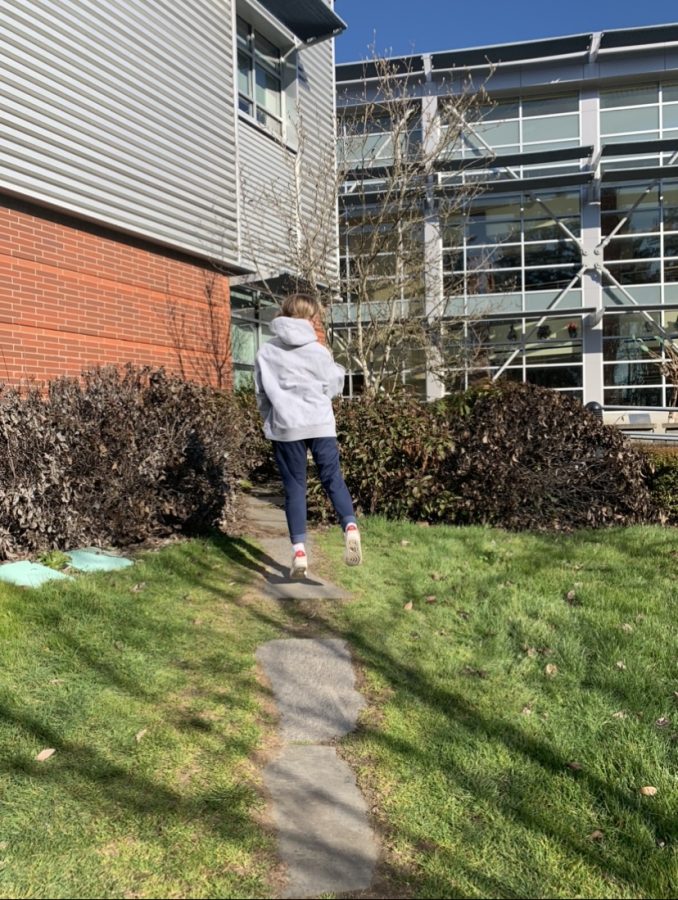Work time outside = A+ ??
Is work time outside/ breaks a thing students desire?
Fiona Dunn, junior, jumping for joy outside of Wilsonville Highschool. The sun was lovely, but don’t let it decide you. It was 34 degrees outside.
February 22, 2022
The Spring season is upon us and closing fast. With February ending around the corner, the warm and bright prospect of March follows. On average, there are 159 sunny days per year. In comparison, the US average is 205. Oregon is sunny 43% of the year.
The classified “summer” months are a 90 day period that typically has very little to sometimes no rain. So when the sun does decide to come out, it’s a spectacular moment and one you want to make last forever.
Low vitamin D levels greatly increase a teenager’s risk of diabetes and heart disease, Johns Hopkins researchers find. Regular sun exposure is the most natural way to get enough vitamin D. To maintain healthy blood levels, aim to get 10–30 minutes of midday sunlight, several times per week.
With school lasting for 5 1/2 hours, five days a week and during the most prime times to absorb sunlight, the amount of sunlight students are exposed to is extremely low, especially in the winter months. Low levels of Vitamin D may contribute to poorly regulated mood and behavior, as a deficiency can impair cognitive function and brain health.
The average week at Wilsonville consists of six, 56 minute periods Monday and Friday, and 3 days of block periods that alternate 4 classes which are approximately a whopping hour and a half long. “I think that being outside would help learning because we would get a break in between learning with fresh air and then can go back to focusing in class, without trying to sit down and do work for an hour and a half,” says Mia Combs, a junior at Wilsonville.
Personally, I agree with Combs. The periods are long and tiring. Most students, myself included, often go straight from school to a sporting or extra curricular activity. The amount of time we spend outside is restricted probably to the moments when we walk to and from our cars during the day. “I think sunny days help give kids brain breaks and it’d be nice to go on a walk especially if it’s sunny outside especially during block periods when you’re in a class for 90 minutes,” says Makenna Weipart.
Sunlight is not the only factor that can contribute to cognitive alertness and learning enhancements. Studies have shown that being in an outdoor environment increases attention, focus, self-discipline and physical fitness, while decreasing stress.
Now the question falls onto the administration, should students have a set time outside during the school day?





































